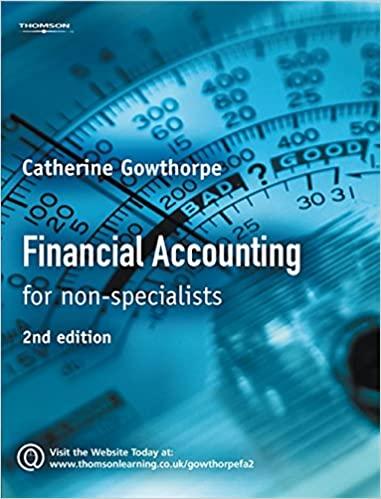Question
1. Assuming your firm purchases Company ZED, what is the amount of loan that Company ZED will take out at the time of purchase? Report

1. Assuming your firm purchases Company ZED, what is the amount of loan that Company ZED will take out at the time of purchase? Report your answer to two decimal places.
2. Why did Company ZED take out this loan?
To partially pay the the amount required to purchase the firm from its existing owners.
Not enough information is provided to answer this question.
To provide cash for the new owners to withdraw as dividends.
To payoff the firm's existing debt.
The loan was taken out inappropriately. My PE firm should have taken out the loan.
3. How much of Company ZED's purchase price will your PE firm pay from its own funds? Report your answer to two decimal places.
4. What is the absolute value of the annual interest expense of the recapitalized Company ZED? Recapitalized means as-purchased, with the new loan in place. Report your answer to two decimal places.
Valuing an Entity with Buy-Manage-Sell Model Introduction Company ZED is a profitable, debt free entity, operating in steady-state forever. Despite this, the economy is in recession, which has depressed the price of ZED's stock. Your PE firm is considering buying ZED at the asking price of: $200 MM This corresponds to a PE ratio of: 10.75 Your firm believes that an optimal capital structure for the firm would be: 30% D/(D+E) If your firm buys company ZED: You will pay (1-D/(D+E))% of the purchase price with your firm's funds. Have the firm take out a loan at the moment of close, to pay the current owners the rest of the purchase price. Your firm will operate company ZED in its recapitalized steady-state for three years. You will sell ZED at the end of this time, when you believe the entity's PE ratio will have recovered to a more normal value of: 13.9785 Given Constants TRF 4.00% Bu BL 8.00% 1.3000 1.6454 Financing Structure D + E = CAP tot D/(D+E) = WD D Existing As purchased $200 $200.0 0.0% 30.0% $0.0 $200.0 E Key Rates Existing As purchased 7.00% 8.00% ro 9.20% re Income Tax rate 10.58% 38.00% Free Cash Flows FCFE Income Statement Revenue - Depreciation - Other Expenses = EBIT -Interest - Tax = NI Existing D = $0.0 $150.00 ($80.00) ($40.00) $30.00 $0.00 ($11.40) $18.60 As Purchased $150.00 ($80.00) ($40.00) $30.00 $0.00 - A Working Capital + Depreciation = CF operations, E $0.00 $80.00 $98.60 $80.00 CAPX + A Debt ($80.00) $0.00 $18.60 ($80.00) $0.00 = FCFE Valuation at T=0 NPVE = -Pp, E + E FCFE, i/ (1 +12)"' + Sp, e/(1+IE)" Pp.E FCFE = Computed above Spe= NPVE Valuing an Entity with Buy-Manage-Sell Model Introduction Company ZED is a profitable, debt free entity, operating in steady-state forever. Despite this, the economy is in recession, which has depressed the price of ZED's stock. Your PE firm is considering buying ZED at the asking price of: $200 MM This corresponds to a PE ratio of: 10.75 Your firm believes that an optimal capital structure for the firm would be: 30% D/(D+E) If your firm buys company ZED: You will pay (1-D/(D+E))% of the purchase price with your firm's funds. Have the firm take out a loan at the moment of close, to pay the current owners the rest of the purchase price. Your firm will operate company ZED in its recapitalized steady-state for three years. You will sell ZED at the end of this time, when you believe the entity's PE ratio will have recovered to a more normal value of: 13.9785 Given Constants TRF 4.00% Bu BL 8.00% 1.3000 1.6454 Financing Structure D + E = CAP tot D/(D+E) = WD D Existing As purchased $200 $200.0 0.0% 30.0% $0.0 $200.0 E Key Rates Existing As purchased 7.00% 8.00% ro 9.20% re Income Tax rate 10.58% 38.00% Free Cash Flows FCFE Income Statement Revenue - Depreciation - Other Expenses = EBIT -Interest - Tax = NI Existing D = $0.0 $150.00 ($80.00) ($40.00) $30.00 $0.00 ($11.40) $18.60 As Purchased $150.00 ($80.00) ($40.00) $30.00 $0.00 - A Working Capital + Depreciation = CF operations, E $0.00 $80.00 $98.60 $80.00 CAPX + A Debt ($80.00) $0.00 $18.60 ($80.00) $0.00 = FCFE Valuation at T=0 NPVE = -Pp, E + E FCFE, i/ (1 +12)"' + Sp, e/(1+IE)" Pp.E FCFE = Computed above Spe= NPVEStep by Step Solution
There are 3 Steps involved in it
Step: 1

Get Instant Access to Expert-Tailored Solutions
See step-by-step solutions with expert insights and AI powered tools for academic success
Step: 2

Step: 3

Ace Your Homework with AI
Get the answers you need in no time with our AI-driven, step-by-step assistance
Get Started


